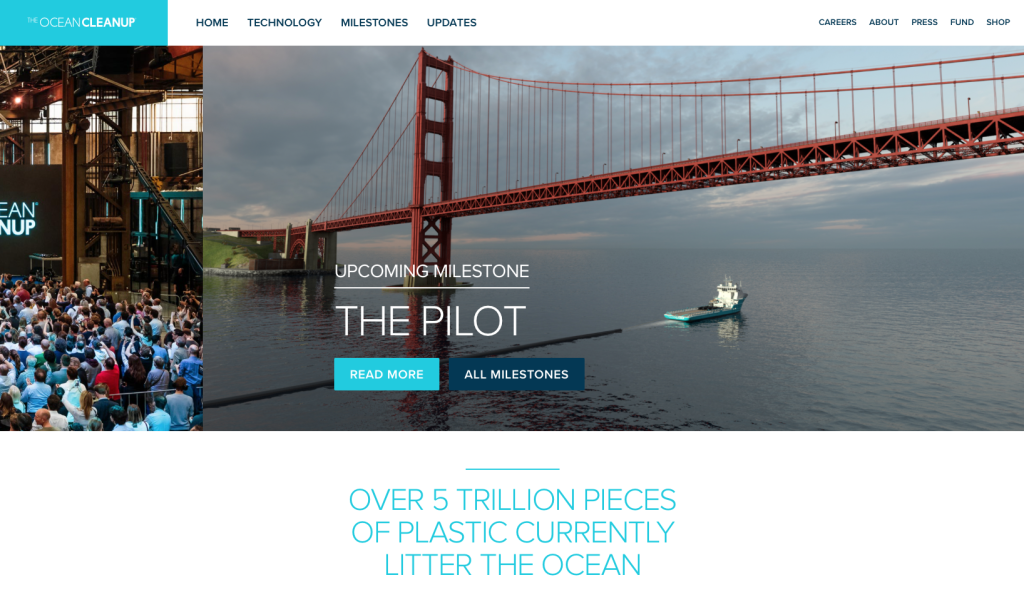Suivez l'évolution du projet qui vise à débarrasser les océans des tonnes de déchets plastiques grâce à une technique révolutionnaire.
The plastic pollution problem
- Millions of tons of plastic have entered the oceans (UNEP 2005)
- Plastic concentrates in five rotating currents, called gyres (Maximenko et al., 2012)
- In these gyres there is on average 6x more plastic than zooplankton by dry weight (Moore et al., 2001)
- 1/3rd of all oceanic plastic is within the great Pacific Garbage Patch (Cózar et al, 2014)
Ecological effects
- At least one million seabirds, and one-hundred thousand marine mammals die each year due to plastic pollution (Laist, 1997)
- Lantern fish in the North Pacific Gyre eat up to 24,000 tons plastics per year (Davidson & Asch, 2011)
- The survival of many species, including the Hawaiian Monk Seal and Loggerhead Turtle, could be jeopardized by plastic debris (Derraik, 2002)
- Plastic pollution is a carrier of invasive species, threatening native ecosystems (Barnes, 2005)
Economic effects
- Marine debris causes an estimated $1.27 billion (U.S) in fishing and vessel damages in the APEC region annually (McIlgorm et al., 2008)
- The costs of removing debris from beaches is on average $1,500 (U.S), and up to $25,000 (U.S) per ton (APEC 2009)
- Plastic pollution causes over an estimated $ 13 billion globally each year (UNEP 2014)
Health effects
- Toxic chemicals (including PCBs and DDTs) are adsorbed by the plastic, increasing the concentration a million times (Mato et al., 2001)
- After entering the food chain, these persistent organic pollutants bioaccumulate in the food chain (Tanaka et al., 2013)
- Health effects linked to these chemicals are: cancer, malformation and impaired reproductive ability

